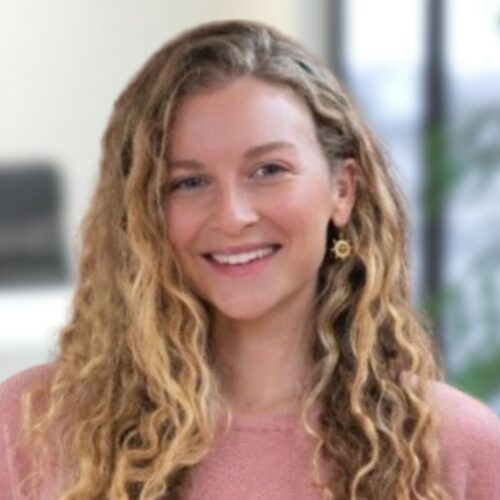In 2020, statistics showed that 25% of tech jobs were held by women. The reasons for this underrepresentation of women in the tech industry can span anywhere from lack of mentors, workplace gender bias, unequal growth opportunities, and lack of female role models. Yet, despite women’s challenges in the industry, there’s an undeniable presence of women who have fundamentally made tech what it is today. Here is a list, that’s by no means all-encompassing, celebrating the influential women in technologies history.
Top 5 Influential Women in Tech History

1. Ada Lovelace – “The First Computer Programmer”
Born in 1815, Ada Lovelace would seem an unlikely woman to appear on a list of women in tech. But Lovelace was an avid mathematician and is famously known for being the world’s “First Computer Programmer”, long before a modern computer even existed. In 1833, Lovelace befriended Charles Babbage, known as the “Father of the Computer” for his invention of the first mechanical computer and concept creations of digitally programmable computers. Lovelace corresponded with Babbage for years during his development of the Analytical Engine, a mechanical general-purpose computer. In 1843, Lovelace transcribed an article into English which described the functionality of the Engine. However, Lovelace wrote the article to be three times longer than the original by providing her own additional set of notes, alphabetically labelled Notes A – G. Within Note G, Lovelace wrote a detailed method for “data input” to allow the Analytical Engine to calculate Bernoulli numbers. This method is recognized as being the first computer algorithm program. Today, Lovelace is recognized annually on Ada Lovelace Day, held on the second Tuesday of October.

2. Hedy Lamarr – The Wi-Fi Visionary
Hedy Lamarr was an Austrian-born American actress during the Golden Age of Hollywood, starring in films alongside the likes of Clark Gable and Bob Hope. But behind the glitz, glamour, and movie-screens, Lamarr was a passionate inventor. Her various contributions include improved traffic stoplights, fluorescent dog collars, dissolvable tablets that create carbonated drinks, and the redesign of a more aerodynamic airplane during WWII. Yet Lamarr’s most notable invention won her a posthumous indictment into the National Inventors Hall of Fame. In 1940, Lamarr met composer George Antheil at a dinner party. They bonded over a discussion of the then-recent sinking of the SS City of Benares, which had been torpedoed by a German submarine. Together, Lamarr and Antheil created and patented a frequency hopping, spread-spectrum secret communication system that prevented enemy forces from blocking the signals of the radio-guided torpedoes of allies. This communication system was later used during the Cuban Missile Crisis and later became a fundamental element for the creation of Wifi, Bluetooth, and GPS signals.

3. Grace Hopper – Computer Programming Language Pioneer
Grace Hopper coined the phrase “it is often easier to ask for forgiveness than to ask for permission” and “computer bug”, after literally finding a bug in a computer that had been causing hardware issues. But Hopper wasn’t only a creator of popular phrases; she was also a computer scientist and United States Navy admiral. Her most notable contribution to the world of tech was her development of the first English-language data-processing compiler, known as the common business-oriented language (COBOL). Hopper adamantly believed computers would one day become commonly used by non-professional programmers, and therefor computer programming language should be based on the English language rather than only symbols and codes. Among being awarded many honors and accolades, she was posthumously awarded the Presidential Medal of Freedom for her accomplishments in computer science.

4. Annie Easley – The Human Computer Turned Computer Scientist
In 1955, Annie Easley was hired on as a “human computer” at the National Advisory Committee for Aeronautics (now known as NASA) to perform complex calculations. The mechanical computer eventually replaced the role of human computers, and Easley adapted to utilizing this new technology by taking on the role of computer scientist. Easley’s accomplishments with NASA include developing and implementing code that analyzed alternative power technologies, energy conversions, and battery life in order to solve energy problems. She also started a project examining the damages made to the ozone layer. Most notably, Easley began working on the Centaur Project, the United States first high-energy upper stage launch vehicle used to launch space satellites and vehicles. Her contributions to developing the project’s rocket stage software laid the technological foundation for future space launches. Near the end of her career, she became an advocate for females and minorities to pursue careers in STEM. Easley also tackled the issues of gender, race, and age discrimination by becoming an Equal Employment Opportunity Counselor with NASA. In 2015, Easley was indicted posthumously into the Glenn Research Hall of Fame.

5. Radia Perlman – “Mother of the Internet”
“The Mother of the Internet” is the well-deserved nickname given to computer programmer and network engineer Radia Perlman. Though the internet technically appeared in the 1960’s, Perlman is named this due to her invention of the spanning-tree protocol (STP). In 1985, Perlman’s supervisor at Digital Equipment Corporation appointed her to find a solution that would give computers the ability to share data more reliably. The STP is a design that allows for the availability of routed backup links when another network link fails. This protocol has since become the fundamental design that allowed the Ethernet’s limited-scalability to transform into today’s world wide web. Perlman has since been indicted into the National Inventors Hall of Fame and the Internet Hall of Fame.
These women have not only pioneered technology as we know it today, but they’ve also paved the way for all women to be seen as important and influential professionals in this largely male dominated industry. We owe it to these previous pioneers, and to ourselves, to encourage and celebrate the continued growth of women conquering all fields in STEM. Here are a few women in technology today that are continuing to trailblaze the world of technology:
Trailblazing Women in Tech Today

Katie Moussouris – Computer Security Trailblazer
Katie Moussouris, CEO of Luta Security, is a trailblazer in computer information security and vulnerability disclosure. Moussouris created the bug bounty program for Microsoft and was involved in the creation of the first bug bounty program “Hack the Pentagon” for the U.S. Department of Defense’s.

Dr. Fei-Fei Li – Artificial Intelligence Pioneer
Dr. Fei-Fei Li is a Stanford Professor for the Computer Science Department, Co-Director of Stanford’s Human-Centered AI Institute, and co-founder of the non-profit organization AI4ALL. Li is the creator of ImageNet, the project that trains computers to recognize and understand objects and concepts within a picture using a large visual database.

Susan Wojcicki – Google Groundbreaker and CEO of YouTube
Susan Wojcicki’s career began when her garage became the birthing spot of Google, after renting it out to Larry Page and Sergey Brin for use as office space. Wojcicki was Google’s first Marketing Manager, and later SVP of Advertising & Commerce where she developed the company’s groundbreaking products AdWords, AdSense, and Google Analytics. She discovered, and acquisitioned via Google, the then small YouTube and DoubleClicks. Wojcicki is currently YouTube’s CEO.
Additional Resources
For more information on women in tech, how to become one, and how to encourage the future of women in the industry, check out these additional resources:

About the Author

Amanda Sorg | Copywriter & Content Manager
Amanda is Copywriter & Content Manager at Divurgent. She focuses on strategizing and creating impactful, meaningful content that drives the connection of readers and clients to the Divurgent community and offerings. She received her Bachelor of Arts degree in Psychology and Anthropology from the University of North Florida and holds certifications in Digital, Content, and SEO Marketing. To learn more about Amanda, visit her on LinkedIn.


